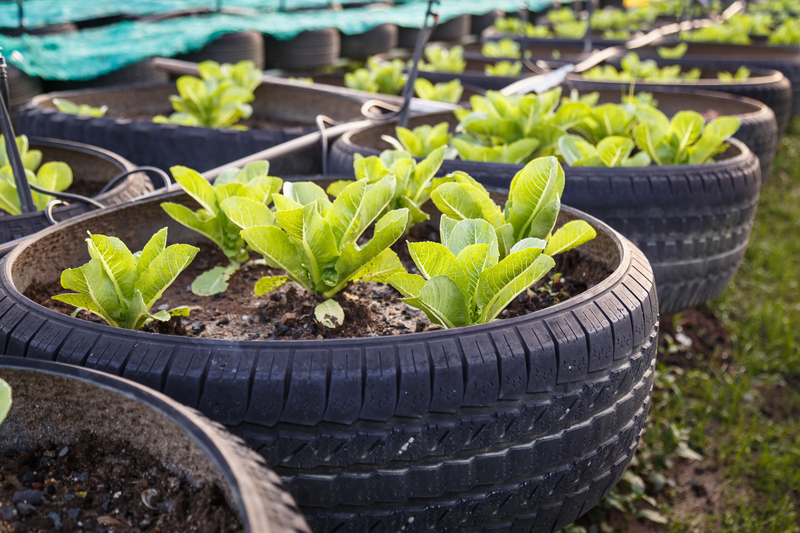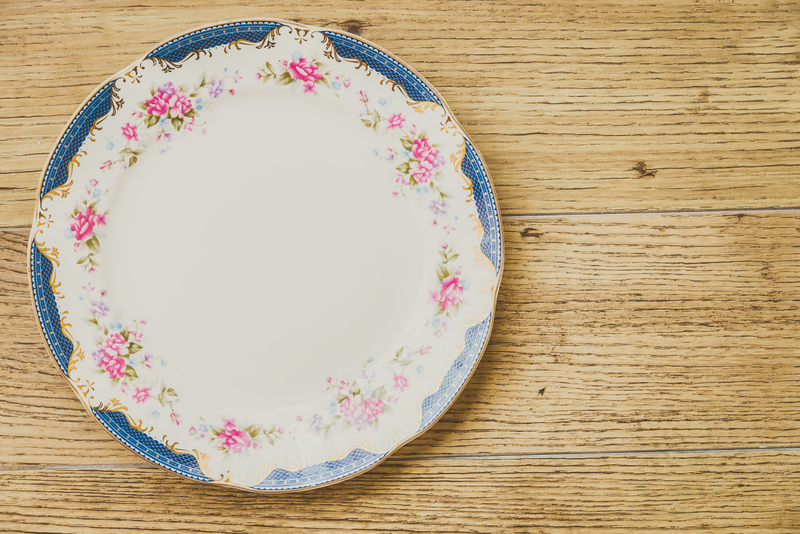Simple Tips for Proper PPE Waste Disposal at Home and Work
In recent years, the use of Personal Protective Equipment (PPE) such as masks, gloves, and face shields has become commonplace both at home and in workplaces. With increased PPE usage comes the important responsibility of proper PPE waste disposal. Incorrect disposal can contribute to environmental pollution and pose health risks. In this comprehensive guide, we'll walk you through simple yet effective methods for disposing PPE waste responsibly, whether you're at the office, a factory, or in your own home.

Why Proper PPE Waste Disposal Matters
PPE, like gloves, masks, gowns, and face shields, are often made from materials such as plastic, non-woven fabric, or rubber. If not disposed of properly, these items can linger in the environment for decades, pollute waterways, and endanger wildlife. Improper handling of used PPE can also lead to the spread of infectious diseases, especially if the waste contains biological contaminants.
Main Negative Impacts of Incorrect PPE Waste Disposal
- Environmental pollution: Non-biodegradable PPE adds to landfill overflow and pollutes rivers and oceans.
- Health hazards: Used PPE may expose sanitation workers and the public to harmful pathogens.
- Legal consequences: Failing to follow local waste disposal regulations can result in fines or penalties for businesses.
Types of PPE and Their Disposal Needs
Understanding the various types of PPE waste helps determine the safest and most suitable disposal method.
- Masks (surgical, cloth, N95): Most masks are single-use and must not be recycled with household plastics.
- Gloves (latex, nitrile, vinyl): These should be kept separate from regular waste streams.
- Face shields: Disposable and reusable variants will require different approaches.
- Gowns and aprons: Usually found in healthcare and certain workplace settings, these may be classified as medical waste.
PPE Waste at Home
Even in a home setting, safe disposal of PPE is essential. Here are some simple tips:
- Separate your PPE waste: Designate a lined bin with a lid for used PPE. This prevents accidental contact and cross-contamination.
- Seal before discarding: Place used PPE in a plastic bag, seal it tightly, and then dispose in your general waste.
- Never flush PPE: Do not flush masks and gloves down the toilet--they can block drains and contaminate water sources.
- Label the waste if sick: If someone in your home is ill, label the bag as "hazardous" or "infectious waste" to protect waste handlers.
- Wash your hands: After disposing of PPE, always wash your hands thoroughly with soap and water.
PPE Waste in the Workplace
Workplaces, especially healthcare and industrial environments, produce significant amounts of PPE waste. To comply with safety standards and minimize risks, follow these best practices for PPE waste management at work:
- Provide dedicated PPE bins: Use clearly labeled bins for PPE waste. Color coding, such as red or yellow for medical waste, can be helpful.
- Educate employees: Regularly instruct staff on the importance of proper PPE disposal and the correct procedures.
- Implement a collection schedule: Do not allow PPE waste to accumulate. Set up regular collection and disposal routines.
- Coordinate with waste disposal services: Partner with certified waste management providers, especially for hazardous or infectious PPE waste.
- Follow legal and safety guidelines: Adhere to OSHA, CDC, and local regulations regarding PPE and medical waste disposal.
Steps for Disposing PPE Waste at Home Effectively
Nothing is more crucial than safeguarding your family and the environment when disposing of PPE waste at home. Here is a straightforward process to follow for correct disposal:
- Set up a special bin: Assign a garbage bin specifically for PPE items. Place a sturdy liner in the bin to secure the waste.
- Handle with care: Always remove masks, gloves, and other PPE gently, touching only the straps or edges to avoid direct contact with contaminated surfaces.
- Seal the waste: Collect the used PPE in a plastic bag. Once full, tie the bag tightly to prevent any leaks or spills.
- Label if necessary: For extra precaution--especially if a family member is ill--label the bag with "PPE Waste" or "Infectious Waste."
- Dispose with household waste: Most city authorities recommend discarding the sealed bag with your regular trash. Avoid mixing with recyclables.
- Clean up: After disposing, disinfect the bin and your hands thoroughly.
Additional PPE Waste Management Tips for Households
- Reduce wherever possible: Use reusable PPE like washable cloth masks when safe and appropriate.
- Don't litter: Never throw PPE waste on the streets or in public spaces. This not only pollutes but endangers others.
- Encourage others: Set an example by practicing and promoting responsible PPE waste disposal in your community.
Effective PPE Waste Disposal in Workplaces
Businesses and workplaces have a duty to protect both employees and the environment through structured PPE waste management. Here are advanced strategies for proper workplace PPE waste disposal:
1. Designate and Mark PPE Waste Bins
Use containers that are leak-proof, puncture-resistant, and clearly marked "PPE Only" or "Infectious Waste." Place these bins at key locations such as entrances, break rooms, and work areas.
2. Train Employees
Proper PPE waste disposal begins with education. Provide regular training sessions and update staff on new regulations. Use posters and digital reminders to reinforce correct disposal practices.
3. Ensure Frequent Waste Removal
Don't allow bins to overflow. Set a schedule for waste collection, and provide PPE for custodial staff handling the bins. Regular removal minimizes exposure and contamination risks.
4. Safe Handling and Storage
- Seal PPE waste before temporary storage.
- Keep stored PPE waste away from food storage and high-traffic areas.
- Label temporary storage areas as "Biohazard" if relevant.
5. Use Professional Waste Disposal Services
For large quantities or hazardous PPE waste, partner with licensed commercial waste disposal companies that comply with environmental and health regulations.
Industry-Specific Protocols
- Healthcare: Follow medical waste procedures, using red bags and sharps containers as necessary.
- Manufacturing: Train floor staff in PPE waste segregation, and use heavy-duty bins.
- Offices: Encourage paperless offices to decrease cross-contamination, in addition to PPE bins.
Do's and Don'ts of Proper PPE Waste Disposal
- Do use dedicated, lined bins for PPE waste disposal.
- Do wash your hands thoroughly after handling used PPE.
- Do educate family or colleagues about safe PPE waste practices.
- Don't recycle used PPE with general recyclable materials.
- Don't leave used PPE in open areas, on desks or in bathrooms.
- Don't burn PPE waste in household or office settings--this releases toxic fumes.
Common Mistakes to Avoid in PPE Waste Management
Even well-intentioned individuals and organizations can make mistakes when it comes to disposing of PPE waste. Here are common errors and how to avoid them:
- Mixing PPE with recyclables: Used masks and gloves can't be recycled and contaminate sorting streams.
- Improper labeling: Without clear labeling, PPE waste may be mishandled by others.
- Delaying waste collection: Allowing used PPE to accumulate increases contamination risk.
- Not washing hands after handling: Always clean your hands after contact with used PPE, even if you wore gloves.
Environmental Considerations and Alternatives
With global concern growing over single-use plastics, here's how you can lessen your impact when dealing with personal protective equipment disposal:
- Seek reusable alternatives: Cloth masks that can be washed and reused are a greener choice than disposable options for non-medical use.
- Support take-back programs: Some manufacturers and pharmacies offer PPE recycling or take-back services for items like face shields.
- Reduce unnecessary usage: Avoid using gloves and masks when not required by guidelines (e.g., outdoor exercise, private vehicle travel).

FAQs on PPE Waste Disposal
- Can I recycle my disposable mask?
No, used disposable masks should go to general waste, not recycling bins. - What if my workplace doesn't provide PPE waste bins?
Raise the issue with management and suggest implementing a program for dedicated waste bins. - How should I dispose of PPE if I'm sick?
Seal used PPE in a double bag, label as infectious, and dispose with household waste. - Is it safe to throw gloves away with other trash?
Yes, as long as they are sealed in a bag and bin is lined properly.
Conclusion: Take Responsibility for Proper PPE Waste Disposal
The task of safe PPE waste disposal is a shared responsibility between individuals, families, and organizations. By applying simple tips and best practices, you not only protect yourself and others from potential health hazards but also contribute to environmental sustainability. Make the simple act of proper PPE disposal part of your daily routine--at home, work, and beyond. Every small effort helps create a healthier, cleaner world for all.
```